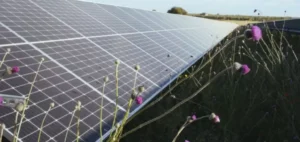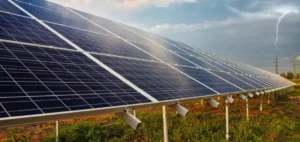The energy crisis that has been affecting South Africa for several years is driving an increasing number of residential consumers towards private solar systems. Initially a marginal trend, solar self-generation has grown significantly and now poses a direct threat to the financial stability of the country’s main electricity provider, Eskom. According to data from Eskom’s 2023-2024 annual report, electricity sales to the residential sector dropped by 3.2% in one year, contributing to an overall sales decline of 5.6%. The state-owned utility reported a record annual deficit of 55.3 billion rand (approximately $3 billion), significantly up from 26.2 billion rand the previous year.
Impact of Self-Generation on Eskom’s Business Model
Between March 2022 and July 2024, the rooftop solar installation capacity in South Africa surged from 983 MW to approximately 5,790 MW, according to figures reported by energy expert Anton Eberhard from the University of Cape Town. This shift translates directly into lost revenue from historically solvent customer segments, as these are precisely the customers with the highest tariffs who are massively adopting self-generation solutions. Consequently, Eskom’s sales decline directly undermines its internal tariff equalization mechanism, where revenue generated from solvent users traditionally finances network costs in economically disadvantaged areas.
Moreover, the tariff increase approved by the National Energy Regulator of South Africa (NERSA), reaching 18.65% in April 2023, may paradoxically accelerate this trend towards self-generation. While intended primarily to offset Eskom’s operational losses, the price hike further motivates consumers to disconnect from the public grid, creating a potentially damaging cycle for the public company’s economic viability.
Satellite Monitoring of Solar Installations
To address this shift and protect its tariff base, Eskom has implemented an active regulatory strategy since early 2025, targeting unregistered solar installations. According to Central News, Eskom now uses satellite imagery combined with advanced data analytics to detect undeclared Small-Scale Embedded Generation (SSEG) systems. This surveillance enables Eskom to impose registration fees and potential fines of up to 50,000 rand on affected consumers. Many municipalities, notably in KwaZulu-Natal, are adopting similar methods to strengthen their control over illegal solar installations, as highlighted by the South African newspaper The Mercury.
However, the deterrent effect of these measures remains limited compared to the substantial savings households gain from solar installations. Additional costs imposed by Eskom, such as mandatory migration to the Homeflex tariff, nevertheless push some households to reconsider their energy strategies, slightly reducing the momentum observed since 2022, according to a recent analysis published by BusinessTech.
Marked Geographic and Economic Disparities
Residential investments in solar energy also reveal significant disparities among South African neighborhoods. A study by Oxford University published in April 2025 indicates that in Johannesburg, the affluent suburb of Rietrivier Estate averages thirteen solar panels per home, compared to just one in Benoni, and none in Thembisa, a low-income area. This marked disparity underscores the unequal investment capacity among South African households, deepening gaps in reliable and stable energy access.
Public programs supporting residential self-generation remain limited to a few major cities and wealthy municipalities. Stats SA (South Africa’s national statistics agency) reports that only 21 of the country’s 257 municipalities had implemented domestic solar installations by the end of 2022, benefiting around 150,000 households mainly located in the developed provinces of Gauteng and Western Cape. Thus, lower-income households remain predominantly dependent on Eskom and exposed to continuously rising tariffs.
The near-term outlook remains uncertain, with private electricity generation—including residential installations and independent producers—projected to surpass Eskom’s production by 2025, according to an analysis from investment bank Morgan Stanley.






















